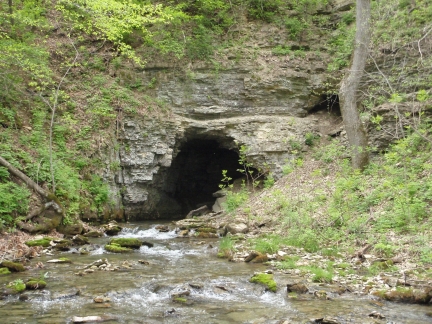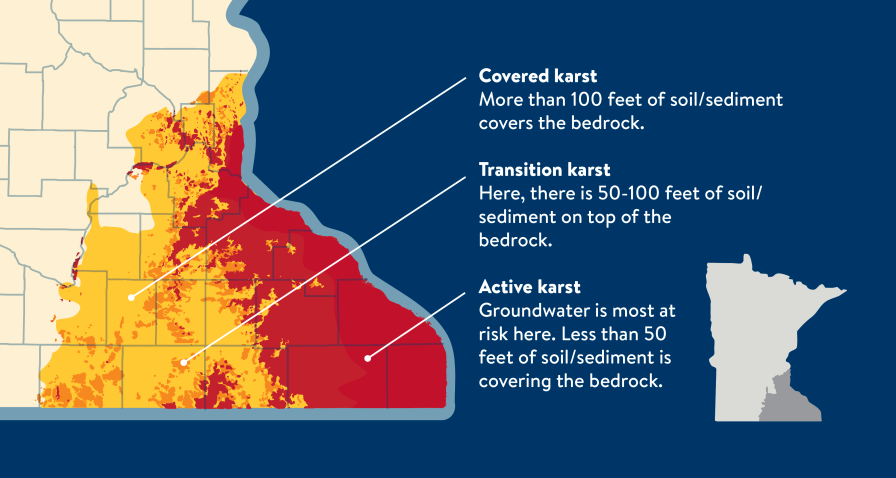
Southeastern Minnesota is characterized by an unusual type of geography called karst. It features rolling hills, hollows, caves, sinkholes, and dramatic bluffs and valleys. In karst landscapes, the distinction between groundwater and surface water is blurry. Groundwater may emerge as a spring, flow a short distance above ground, only to vanish in a disappearing stream, and perhaps re-emerge farther downstream again as surface water. This connection between groundwater and streams makes southeastern Minnesota home to many cold-water streams, where trout and other important species thrive. In addition, pollution affecting groundwater can quickly threaten a stream, and the animals and plants living there. And contaminated surface water can easily become groundwater pollution, and pose a health risk to those using it for drinking.
Some features of karst geography include:
- Subsurface drainage (lack of streams and other surface water) — When rainwater filters quickly into the soil, as in a karst landscape, water is not collected into streams and cannot cut valleys.
- Blind valleys end abruptly at a point where its stream sinks, or once sank, underground. Blind valleys are completely enclosed valleys that water cannot flow out of on the surface.
- Caves
- Disappearing streams are surface streams that run into holes in the ground and partially or completely cease flowing on the surface
- Sinkholes are closed depressions caused by a collapse of soil or overlying formation above fractured or cavernous bedrock
- Springs include any natural discharge of water from rock or soil onto the surface of the land or into a body of water. Disappearing streams may re-emerge at springs.
Contaminants can quickly find routes from the surface into groundwater. Petroleum and other chemicals leaking from underground storage tanks can quickly move into groundwater. Spilled manure can cause fish kills many miles from the release point. Chemicals used on the landscape can reappear at unexpected times and in unexpected locations.
Most Minnesota karst landforms are found in “active karst” (red) and “transition karst" (orange) zones.
